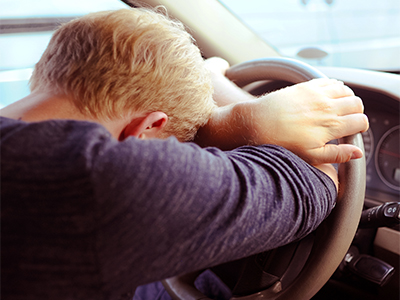
National Safety Month:
Occupational fatigue is all too familiar to plenty of employees who have worked multiple jobs, extended periods of overtime, or in exhausting work environments. Dennis Group's Safety Team is back to tell you that, sometimes, that fifth cup of coffee just ain't gonna cut it -- and some tips for making sure you don't get to that point.
You're getting sleepy...very sleepy.
Strenuous working conditions, irregular work schedules, and extended hours can all lead to fatigue - and fatigue can create or exacerbate hazardous working conditions and even contribute to health problems. More than 43% of workers are sleep-deprived, and those most at risk work the night shift, long shifts, or irregular shifts.
Lack of sleep and/or extended periods of hard labor are the most obvious causes of workplace fatigue, but they aren't the only culprits. Your work environment might be contributing to your fatigue, too. In the manufacturing and construction industries, environmental conditions like constant loud noise or vibrations can exhaust employees.

Feeling drowsy? Nearly 7 out of 10 workers feel tired on the job, and that means accidents are more likely to occur: about 45% of employers report fatigue-related safety incidents.
Just tired?
It's easy to joke about how adulthood is just being tired for the rest of your natural life, but just being tired is a genuine health and safety risk. Fatigued workers might show symptoms of depression, weariness or irritability, slow reaction times, lower motivation, and increased susceptibility to accidents or illness -- all of which can spell disaster on a job site.
And when it comes to operating heavy machinery, losing sleep can have the same effect as alcohol. Awake for more than 20 hours? You may as well be over the legal limit to drive. And you're three times more likely to be in a car crash if you're fatigued...like, say, from long shifts or lack of sleep.

Keep an eye out for signs of fatigue, like lack of concentration, unusual risk-taking, or collapsing on the floor when you get home.
Get some shut-eye.
The best way to avoid workplace fatigue is also the simplest: just get more sleep. But those 7-9 hours can seem like a distant dream when faced with the realities of 24/7 job site coverage and shift work. In these cases, it's up to team members to use your off-time to rest and try to ensure the sleep you get is as high quality as possible.
Exercise is one great way to improve your sleep by exhausting your muscles and creating adenosine, a chemical which helps you sleep.
Avoid drinking alcohol or caffeinated beverages too close to sleep. Alcohol might make you feel drowsy but it can disrupt your circadian rhythm, and caffeine keeps you alert by blocking adenosine.
Blue light from your phone or TV can keep your body from producing melatonin, the hormone that tells you it's bedtime, so cut out screen usage at least 30 minutes before bedtime. Finally, keep your bedroom cool and dark. Blackout curtains keep light from slipping in and waking you up. And a room in the 60-68 degree F range stimulates melatonin production to send you straight to dreamland.

Try to get 7-9 hours of sleep each day so you can rise and shiine!
Make it a habit.
The key to fatigue risk management lies not just in balancing workloads, workplace design, and employee training, but on making those things part of your daily routine. Dennis Group Safety Managers check in regularly to watch for signs of fatigue and monitor the workplace to mitigate fatigue-related safety risks and encourage team members to look out for one another and alert a supervisor if they notice signs of fatigue in a co-worker.
Ultimately, workplace fatigue can be mitigated through a combination of employer initiatives like developing schedules to keep extended hours to a minimum and provide adequate opportunities for rest, and employees taking personal accountability for their needs and health. A well-rested work site is a productive and efficient -- and safe -- work site.








